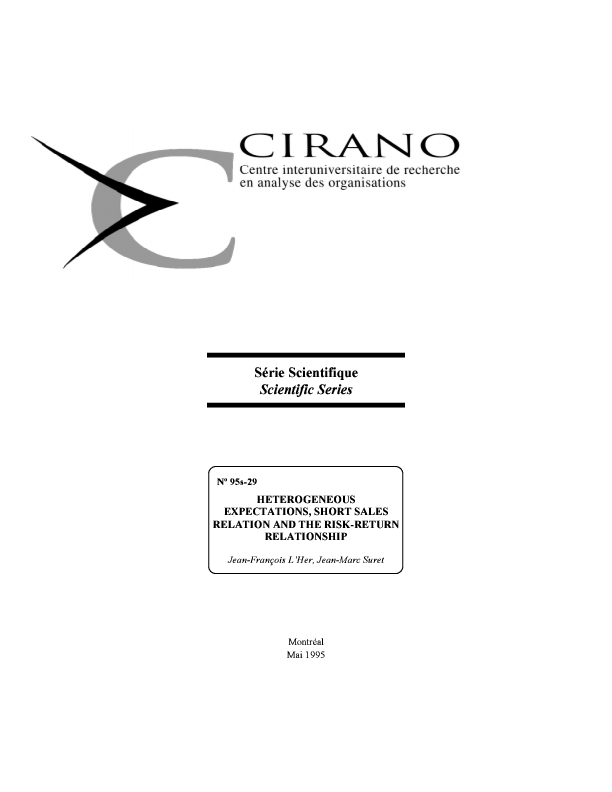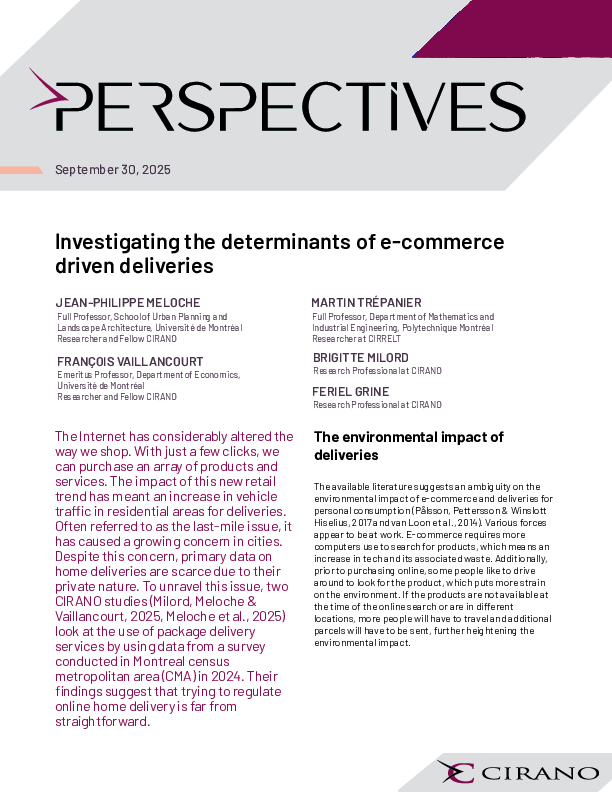Heterogeneous Expectations, Short Sales Regulation and the Risk Return Relationship
This paper examines, in a Canadian context, the effect of short sales regulation on the risk-return relationship. Drawing from Jarrow's work (1980), we derive an equilibrium risk-return relationship that accounts for both heterogeneous expectations and short sales regulation. We conclude that the required rate of return on risky assets in a world where short sales are forbidden is equal to the required rate which would prevail in a world free of short sales restrictions, minus an opportunity cost induced by short sales regulation. We show that, theoretically, this opportunity cost is positively related to the dispersion of agents' beliefs and negatively related to the security's liquidity level. We test the model over the sixty-month period from January 1985 through December 1989 and use 13079 observations (220 companies on average). We pool all the observations into a time series cross-sectional model and use Litzenberger and Ramaswamy's methodology (1979) to address three econometric problems: heteroscedasticity, cross-correlation of disturbance terms and beta measurement errors. The results permit us to establish that a negative linear relationship links expected risky asset returns and the divergence of agents' beliefs. This negative relationship is consistent with the presence of opportunity costs resulting from short sales regulation when return beliefs are heterogeneous. We find that the negative relationship between security returns and dispersion of beliefs is essentially confined to illiquid securities, that is, those monitored by a small number of analysts. Finally, these results are not modified when tested on two sub-periods nor when we introduce two control variables (size, as measured by the number of analysts monitoring the stock, and January effect).
[ - ]




